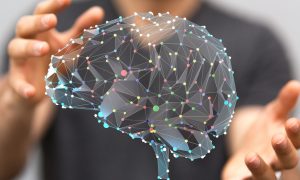Now, before you run out and start packing survival equipment and food rations, let me assure you that
this technology is still in its infancy.
On November ninth, the gurus at Google let loose the intention of open sourcing their TensorFlow technology to the public. Doing so will help to better this piece of software by making it available to professionals and armatures alike.
Tensorflow can help companies and scientists sift through large volumes of data with relative ease, as well as recognize patterns it sees within that data. According to experts, this new software gives machines a better understanding of abstract ideas which plague current systems. Let’s say for example you have a picture of someone playing baseball. The average person would know instantaneously what the individual in the image is
doing. A computer on the other hand, would have a very difficult time recognizing anything, except
perhaps, the direction in which the player is moving.
Google isn’t just releasing this piece of software, and then letting go. Tensorflow is already the standard
learning system used by many of Google’s core apps. Representatives at the company say that this new
scalable learning system “is faster, smarter, and more flexible than our old system, so it can be adapted
much more easily to new products and research.” The potential for this new wave in computer learning
software is limitless given the fact that it can be scaled up or down depending on individual needs. On
their blog, Google claims that the system “can run on a single smartphone or across thousands of
computers in datacenters.” With both scalability, and open sourcing on its side, there is little doubt that
Google’s next big innovation will be a hit.
Many might consider the term Neural Networking to be a throwback to the days of big hair and
awesome mustaches, but the idea is still alive and well today. In most models there are three
independent layers working together to form this network. It’s very similar to the biological model of
learning that we see in ourselves. As signals are entered, processed, and expelled more frequently, a
specific set of neural nets becomes stronger. In other words, the more the connection is made, the
stronger it’s retrieval rate. It’s really not all that different from the way in which we learn. In order to
study for that big biology test, we humans expose ourselves to the source data again and again. After we
have done this enough times, our brains hold onto the material, and make the retrieval of such
information much easier.
The shear versatility and lack of restraints associated with this new technology make the transformation
of certain programs and apps inevitable. Open sourcing this to the public allows for progress to be made
in coding, networking, data analysis, and more. Many in the field, are saying that this system might be
one of the most exciting leaps in the field of computer learning seen in recent years. While there will
always be nay-sayers to the option of intelligent computers, we normal folks will stay at the forefront of
this technological revolution with our cell phones in hand and our bugout bags stashed secretly away in
the closet.
Sources:
TensorFlow: smarter machine learning, for everyone
Google's New AI System Could Be 'Machine Learning' Breakthrough






